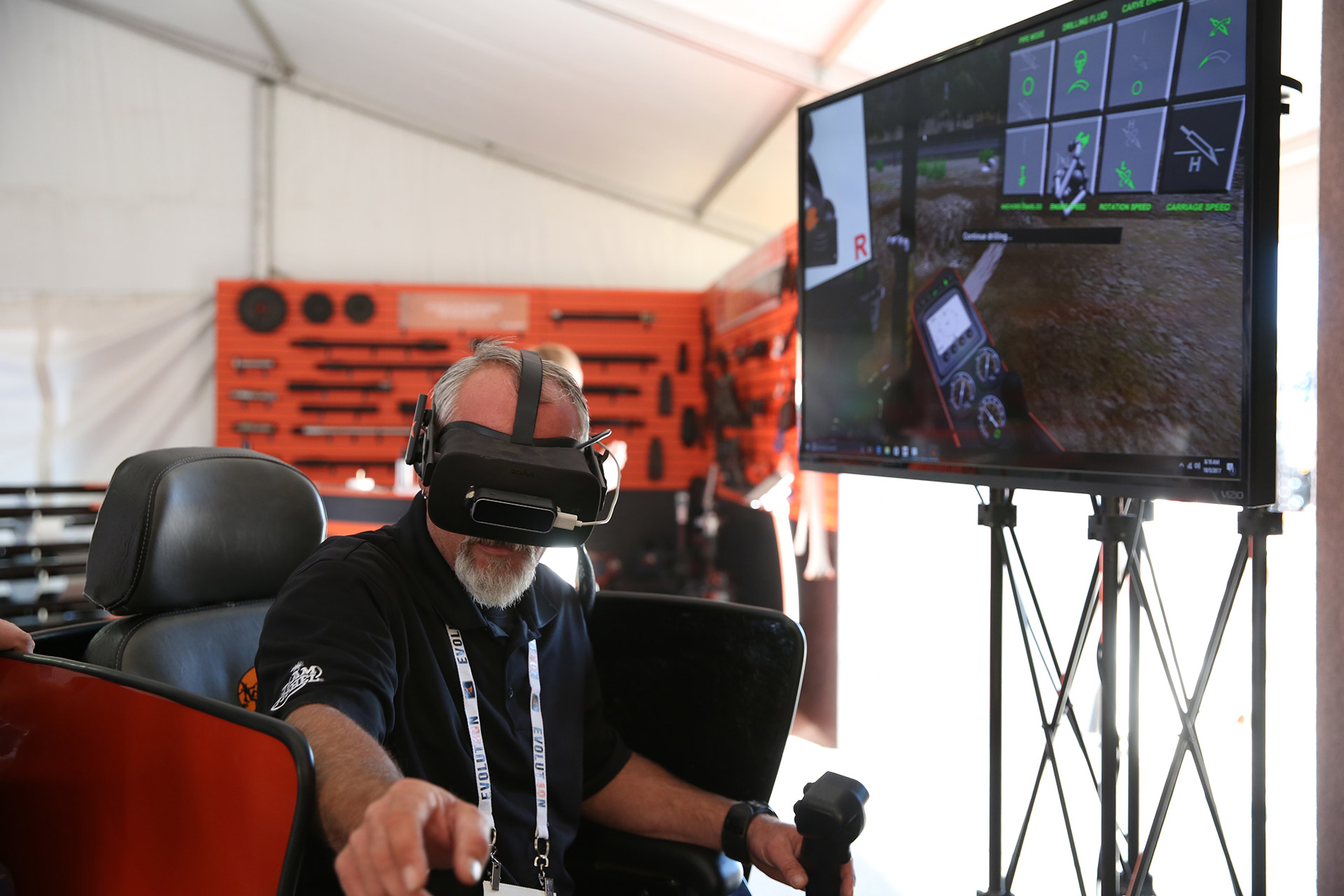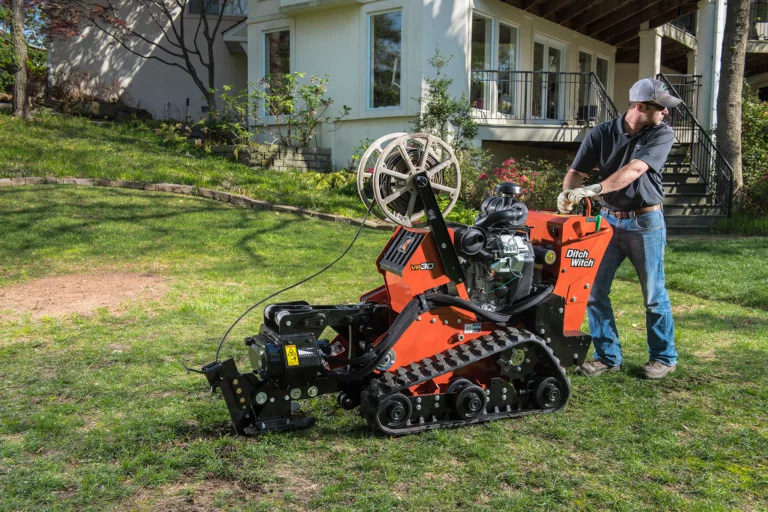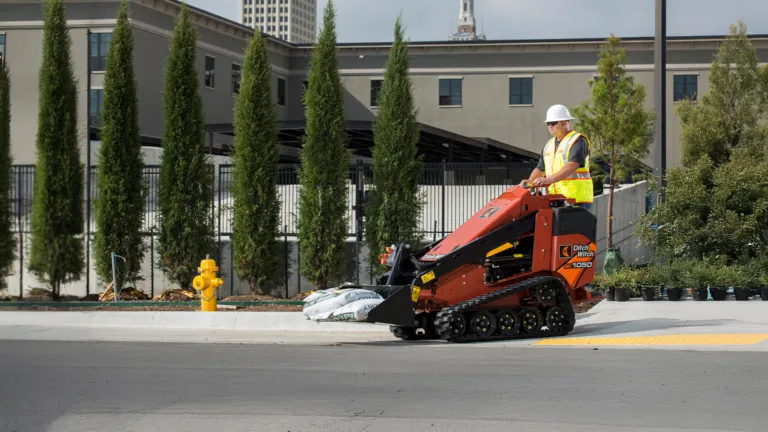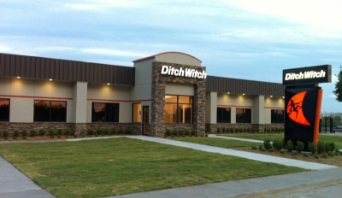Hard hats go high-tech: VR is reshaping the future of training in underground construction
;’;
By Nicholas Smith, product trainer, Ditch Witch
As in any profession, the equipment and tools used are only as useful as the professionals know how to use them. This sentiment rings true in the case of underground construction professionals. In an industry experiencing evolving challenges – including more compact urban jobsites, complex underground networks and growing demand for underground construction projects – it is crucial that professionals are comfortable with their equipment in order to deal with the constraints of a modern jobsite. Concurrently, a looming workforce shortage is making it difficult for contractors to recruit and train fresh talent to keep pace with demand.
Stepping up to support the development of a fresh workforce are original equipment manufacturers (OEMs), like Ditch Witch and Subsite, who are developing innovative and adaptable training solutions to engage the next generation of workers. With flexible training options already in place such as online training platforms, simulators, instructor-led courses and hands-on job training, OEMs are embracing technology to assist the industry’s growing demand. One digital technology that is bringing training into a new era is virtual reality (VR).
VR technology presents an innovative solution to engage and upskill both new workers and professionals in need of a refresher. By simulating 3D underground environments, VR allows trainees to obtain hands-on experience safely and efficiently. Leveraging VR, trainees can apply textbook knowledge in lifelike scenarios before ever stepping foot on a jobsite and operating expensive and often intricate machinery. From HDD equipment operations to navigating complex jobsite conditions, through VR, operators can gain the skills, muscle memory and confidence required for the real world.
From the safety of a virtual world
Ditch Witch has had a 2D HDD simulator curriculum that is divided into three progressive lessons for several years. The first lesson introduces the basics of operating a directional drill in an open space, focusing on pipe handling and drilling. The second lesson shifts to navigating tighter spaces in residential areas, emphasizing utility awareness. The third lesson simulates drilling under a bustling four-lane highway and teaches trainees back-reaming best practices.
However, the underground construction industry, with its diverse skill requirements and demanding backlog of work, needed a more comprehensive training solution that equips contractors with the necessary expertise to operate a safe jobsite. Operating horizontal directional drill equipment and their guidance systems can be daunting and intimidating for beginners. The introduction of VR adds a heightened sense of realism and immersion. It allows trainees to practice these complex tasks, while eliminating the fear of costly errors or mistakes. This not only saves contractors from potentially significant equipment downtime and project delays but also provides workers with a broad range of machine and tool experiences that they would typically encounter day-to-day on the jobsite.
Additionally, with safety top of mind, VR training alleviates worries about injury or damaging valuable machinery and existing underground infrastructure during initial attempts. In the virtual world, mistakes become learning opportunities instead of costly equipment damage or jobsite catastrophes when simulated underground. Through VR, trainees can hone their skills in precise machine operation and techniques withing a safe, simulated environment before they transition to real-world tasks.
Appealing to new generations
Appealing to the next generation of workers is a priority for the underground construction industry, and VR represents a powerful tool to engage young recruits. Immersive and interactive, VR resonates with young professionals who grew up in a world of video games, offering digital-first experiences that appeal to tech-savvy professionals. This modern approach to training, steeped in video game culture, can help attract new operators, assisting to fill the talent pipeline.
Gamification transforms training from routine to revolutionary. Immersing trainees in 3D underground environments where they can see firsthand the interplay of utilities and drilling operations. Through VR training with Subsite’s Marksman Guidance System, operators can virtually see beneath the ground to assist navigation through utility-laden areas in today’s neighborhood rights of way. This not only equips them with practical skills but also adds fun into their learning journey.
However, VR is not a catch-all solution and shouldn’t be replaced with hands-on experience. Instructor-led courses bridge the gap between virtual learning and practical application, ensuring VR-trained operators are jobsite-ready. The optimal use of VR lies within a blended training approach, which complements traditional methods, preparing a new generation of professionals for the demands of the real world.
Additionally, VR is not just for the novice. Ongoing employee development also benefits from VR’s versatility. Seasoned operators can leverage VR to refresh their skills or cross-train on new equipment, maximizing jobsite efficiencies.
An established course in action
Ditch Witch introduced its latest training platform for HDD Guidance at Bauma in 2022 and later showcased it at CONEXPO and Utility Expo in 2023. Designed in a trailer to make VR training accessible and mobile for the OEM, the lessons mimic the hands-on work of underground construction. The Subsite Marksman VR lessons, coupled with Ditch Witch’s HDD simulator, —featuring actual drilling console controls—provide operators with a diverse skill set.
While drilling is traditionally easier to teach, tracking the drill head and helping guide the driller presents a unique set of challenges. The Subsite Marksman VR tackles this by visualizing underground utilities and equipment working in tandem, enhancing training effectiveness. HDD Guidance training is split into two lessons: the first covers equipment setup and calibration of a tracker, which has proven to be one of the most difficult jobsite tasks, while the second focuses on beacon tracking and its critical role in underground construction and directional drilling.
The upcoming third lesson will teach operators how to run a drill and tracker simultaneously and mimics a real-world application to ensure trainees are set up for success. The training blends text instruction and audio instructions and is currently available in Spanish, English and German.
To learn more about these trainings, operators should reach out to their local Ditch Witch dealer.
Just the beginning
It’s no question that technology is revolutionizing all parts of our modern world, including the underground construction industry. Serving as both a compelling recruitment tool and means for experts to refine their skills, virtual reality is just the beginning of a new era of training technology. As VR gains popularity and broadens its applications, it has the potential to bridge the skills gap of the industry, mitigate workforce shortages and shape the underground construction industry of the future.






